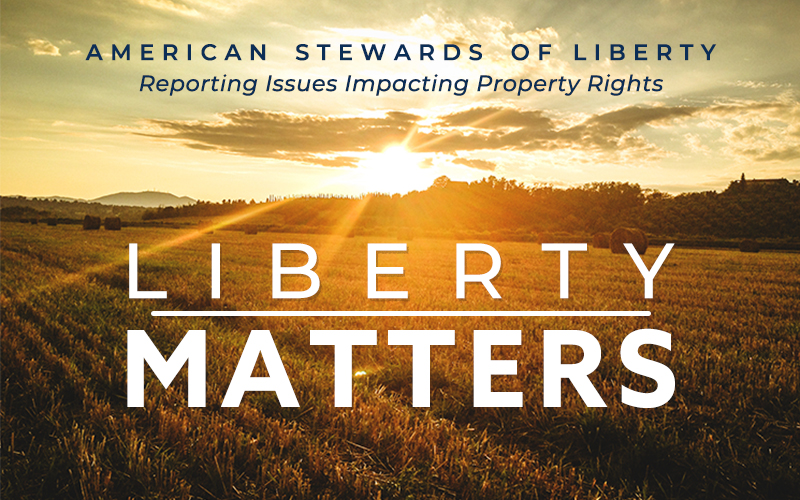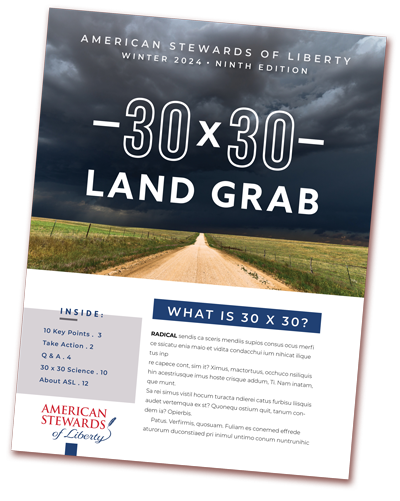(Part 2 of a 2-Part Series on Federalism in Texas)
On May 13, 2016, the Texas Department of Transportation (TxDOT) wrote a stunning letter to Waller County Judge Trey Duhon, explaining that the Federal Rail Authority (FRA) would not allow TxDOT to meet even though state statute requires them to do so.
Waller County is part of a sub-regional planning commission created under Texas Local Government Code 391. It’s called the Waller County Sub-Regional Planning Commission (Commission) and was create in 2008 by Waller County, the Cities of Waller, Prairie View, Pine Island, Hempstead, Pattison, Brookshire and Katy, and also includes both Waller and Hempstead Independent School Districts.
The Commission is one of dozens of similar planning commissions across the state of Texas with the general purpose to “make studies and plans to guide the unified, far-reaching development of a region, eliminate duplication, and promote economy and efficiency in the coordinated development of a region.” [1]
Planning Commissions encourage and permit “local governmental units to: (1) join and cooperate to improve the health, safety, and general welfare of their residents; and (2) plan for the future development of communities, areas and regions…” [2] for transportation, education, agriculture, business, industry, family life, the preservation of historical and cultural values.
Texas’ Local Government Code also requires state agencies to “coordinate” with local planning commissions. In fact, the statue specifically reads: “ In carrying out their planning and program development responsibilities, state agencies shall, to the greatest extent feasible, coordinate planning with commissions to ensure effective and orderly implementation of state programs at the regional level.” [3]
In an interesting twist to this discussion, then State Representative Robert Junell from San Angelo, added Section 391.009(c) to the statute in 2001, specifically because “I was tired of state agencies like the Texas Department of Transportation not working with my local governments,” Junell said in a phone interview several years ago. Junell is now serving as a federal district judge out of Midland, Texas appointed by President George W. Bush in 2003.
In February of 2016, the Commission utilized this statute and had a coordination meeting with TxDOT over the proposed High Speed Rail (HSR) running from Dallas to Houston. This HSR is a proposed project of the private corporation known as the Texas Central Railway, LLC, (TCR).
The FRA is the “lead federal agency” working to complete the Environmental Impact Statement (EIS) and while performing the study, they are supposed to coordinate with local government entities to identify any conflicts or negative impacts the HSR will have on every community between Dallas and Houston.
In fact, the National Environmental Policy Act (NEPA) [4] requires coordination with local governments during the preparation of the environmental analysis of a project, including the HSR. The federal statute places a specific duty on the FRA to coordinate with the Commission.
Additionally, throughout NEPA and the Council on Environmental Quality (CEQ) [5] regulations, there are specific requirements placed on the lead agency to ensure that impacts to local governments are thoroughly analyzed and conflicts with local plans resolved. [6]
The true purpose of a NEPA study is not to approve a federal action, but rather to identify how that action may impact the “human environment.” [7] In essence, the purpose for the EIS is to determine, in part, its impact to the local towns and school districts located in the jurisdiction of the Commission.
FRA designated TxDOT to be the Joint Lead Agency, making Texas’ the planning authority for the HSR and responsible for ensuring the EIS is a legally sufficient environmental study. That is why the Commission requested and was granted the coordination meeting in February, but many major concerns and issues remained unresolved and more meetings were needed and requested.
Letters were written to the FRA and TxDOT, but, none of the agencies would comply with federal or state statutes to work with the Commission.
Then, on May 13, 2016, Judge Duhon, president of the Commission, received a letter from Dan Harmon, Interim Rail Division Director for TxDOT that read, in part:
“The Draft Environmental Impact Statement (DEIS) will be published in the fall of this year, at which time, the public comment period will begin. During this time, there will be a round of public hearings at which all stakeholders can formally express their opinions on the project. Therefore, FRA has indicated that until the DEIS is released, they will not participate in any coordination meetings, and has requested that TxDOT also refrain from participating. Thus, FRA and TxDOT will not be able to attend WCSRPC’s upcoming coordination meeting.”
First of all, the Commission is not a “public stakeholder.” The Commission is a political subdivision of the state of Texas with planning authority made up of elected representatives of the public. They are not public stakeholders, but a local governmental entity with jurisdictional planning authority recognized by both state and federal laws that statutorily grant them the use of the coordination process to ensure conflicts are resolved at the local level.
On June 20, 2016, Ron Curry, Regional Administrator for Region 6 of the EPA wrote a letter to the Commission explaining that the Commission’s comments and demands made during the February coordination meeting are being addressed in the development of the DEIS document being prepared by the FRA and TxDOT.
However, Mr. Curry’s letter goes onto to state that:
“[T]he EPA has offered to host a meeting with Federal Railroad Administration and Texas Department of Transportation to include Waller County Sub-Regional Commission, if needed. At this stage of the Environmental Impact Statement planning process, the EPA can only encourage the lead agency to consider our suggestions and your comments.”
The Commission is considering filing a lawsuit against TxDOT for not complying with Local Government Code 391.009(c). An injunction would ask the court to force TxDOT to halt any efforts being made to develop the DEIS and bring them back to the coordination table to address major issues and concerns that remain.
This needs to happen prior to the publication of the DEIS. Without that input, the cities and school district’s concerns will not be addressed in the proper manner or in compliance with federal and state statutes.
As yet another example of federal creep and overreach into our state, TxDOT is being dictated to and controlled by the FRA and is being told to not comply with a clear state mandate found in our Local Government Code.
These types of federal incursions into Texas must not be tolerated. Allowing a federal agency to dictate the actions of a state agency has a direct and detrimental effect on local governments and their ability to efficiently plan for their constituents.
[1] Local Government Code 391.001(b), Title 12. Planning and Development
[2] Local Government Code 391.001(a)(1),(2)
[3] Local Government Code 391.009(c)
[4] 442 U.S.C. § 4331 et seq.
[5] The Council on Environmental Quality (CEQ) coordinates Federal environmental efforts and works closely with agencies and other White House offices in the development of environmental policies and initiatives. CEQ was established within the Executive Office of the President by Congress as part of the National Environmental Policy Act of 1969 (NEPA) and additional responsibilities were provided by the Environmental Quality Improvement Act of 1970.
[6] See 40 C.F.R. §1501.1(c) “Study, develop and describe appropriate alternatives to recommended courses of action in any proposal which involves unresolved conflicts concerning alternative uses of available resources as provided by section 102(2)(E) of the Act:”
[7] 42 U.S.C. § 4332(2)(c)





